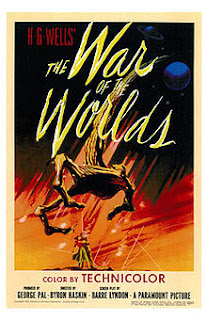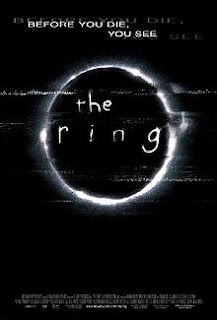Pet Sematary
Pet Sematary was originally a novel written by Stephen King in 1983. The story was written based on real life experiences that King had when he lived in Orrington, Maine. Due to the subject matter, he decided not to pursue publication with the story, and only submitted it after he owed one more book on a contract with Doubleday. The novel went on to become a best seller. In 1989, Mary Lambert directed the film version, and King himself wrote the screenplay. Next to a dangerous road with fast moving truckers lives the Creed family. Nearby is a pet cemetery where locals used to bury their beloved animals, but in this cemetery they do not rest in peace. A series of events take place where the Creed’s cat is buried there, and comes back to life; only the cat is malevolent and avoids them. Soon after, tragedy strikes, and the Creed’s young son is killed. The father places the child in the pet cemetery, proving to be a very bad decision. Pet Sematary did fair at the box office grossing a $57 million return on an $11.5 million budget.

Phantasm
Don Coscarelli wrote, directed, co-produced and edited the film Phantasm in 1979. A sinister movie about a small town where the inhabitants are dying, two brothers, Mike and Jody, become suspicious of the town mortician, dubbed the Tall Man. The Tall Man is turning the dead townsfolk into alien zombies, and the brothers must stop him. Produced on a meager budget of $300,000, Phantasm brought in over $11 million in the theatrical release. It was nominated for a Saturn Award, and Coscarelli won the Special Jury Award. Coscarelli would go on to direct and write the three sequels in the series.
Poltergeist
In 1982, Tobe Hooper, director of films such as The Texas Chain Saw Massacre and Salem’s Lot, directed the iconic horror movie, Poltergeist. It’s the story of an angelic little girl, Carol Anne, played by Heather O’Rourke, who becomes the target of malicious entities within the house. Carol Anne goes missing, and her parents soon realize she’s been taken into another dimension with the entities. Parapsychologists come to the house to investigate, and conclude the necessity of a medium to assist in getting Carol Anne back. The film was a hit and shocked viewers worldwide with its intense subject matter and visuals. Frank Marshall and Steven Spielberg were credited as the producers, but over the years there has been some confusion as to Spielberg’s role as director (uncredited). Spielberg was under contract while he was working on E.T. the Extra-Terrestrial that prevented him from directing another movie. There were reports of his great influence on the directing and that Spielberg was on set all but three days of filming and completed the storyboards. Spielberg eventually posted a letter in The Hollywood Reporter that was addressed to Hooper, stating his satisfaction with their collaboration, and attempting to clear up any doubts that Hooper was indeed the director. Poltergeist made over $76 million upon its release and garnered three Academy Award nominations, including one for Best Visual Effects. In one scene where corpses are unearthed in a swimming pool, they used real skeletons because they were cheaper to purchase than plastic. Over the years, the movie has received the reputation to be cursed due to the many deaths of the cast. There were two sequels that rounded out the trilogy, but neither was as successful as the first film.
.jpg)
Psycho
Norman Bates became a household name in 1960 when Alfred Hitchcock directed the hit movie Psycho. Based on the novel of the same name by Robert Bloch, the story was loosely based on the killer Ed Gein. In the film, Norman Bates (Anthony Perkins) is a single man living in a large house with his mother and running the Bates Motel. Marion (Janet Leigh) is a beautiful lady who steals money from her employer for her boyfriend. She flees Phoenix, AR to go to California, but stops for an overnight stay at the Bates Motel. In one of the most memorable scenes in cinematic history, Marion is killed while taking a shower. The movie then turns into a search for Marion and the stolen money. The shocking twist is revealed near the end. At the time, Paramount rejected the premise, and wouldn’t provide the budget. Hitchcock came up with a compromise that Paramount accepted – he would finance the film himself, and forego the director’s fee in return for 60% ownership. The resistance Hitchcock was met with was due to the film executives not believing the film would be a success. In the end, the film’s budget reached only $806,000. This, along with creative influences, would be the reason Hitchcock filmed the movie in black and white. Leigh took a pay cut when she accepted the role. When Psycho premiered, Hitchcock enforced a “no late admission” rule because he felt that if people entered after the death of Leigh they would feel cheated. This worked to his advantage, and theatres saw lines of people waiting to see the film. Psycho went on to earn $32 million at the box office, and was nominated for various awards. It is considered by some to be Hitchcock’s best work, and to be one of the most influential movies ever made. In 1992 it was preserved in the National Film Registry.

Pumpkinhead
This is a film about a grotesque, menacing monster named Pumpkinhead that is summoned to exact revenge for those who have been wronged. When a group of motorcycle rider’s kill Ed Harley’s young son young, he goes to the local witch who summons Pumpkinhead. The group members become targets of Pumpkinhead’s revenge by way of grisly deaths. Ed realizes what he has done is wrong, but it’s too late to stop it. Produced in 1988, Pumpkinhead was the directorial debut of Stan Winston, special effects artist. Even though it did poorly during its limited release in theatres, it has developed a large cult following over the years. Two sequels followed, and two more sequels were made for television and aired on the SyFy channel. There was a short-lived comic book series based on the film, and The Misfits released a song titled “Pumpkin Head”. There is a poem, Pumpkinhead written by Ed Justin, that the movie was inspired by. It is as follows:
Keep away from Pumpkinhead,
Unless you're tired of living,
His enemies are mostly dead,
He's mean and unforgiving,
Laugh at him and you're undone,
But in some dreadful fashion,
Vengeance, he considers fun,
And plans it with a passion,
Time will not erase or blot,
A plot that he has brewing,
It's when you think that he's forgot,
He'll conjure your undoing,
Bolted doors and windows barred,
Guard dogs prowling in the yard,
Won't protect you in your bed,
Nothing will, from Pumpkinhead.
Puppet Master
Puppet Master was a horror film written by Charles Band and Kenneth J. Hall, and directed by David Schmoeller in 1989. Andre Toulon was the original puppet master, having given life to his handmade puppets in order for them to do his bidding. After his death, the puppets are then given a new master in Neil. A group of psychics, who were former colleagues of Neil’s, begin having visions and seek out Neil. When they find him, it is revealed that he has committed suicide. Soon after the animate puppets start to wreak havoc on the group. Each puppet has a special ability, and the violent deaths they inflict have kept the attention of fans since their debut. The puppets names are: Blade, Jester, Pinhead, Leech Woman, Tunneler, Shredder Khan and Gengie. Pinhead, Blade and Jester are the only one’s to have appeared in all of the films. The movie went straight to video due to Charles Band’s wishes, where it became very popular, seeing nine sequels as a result.
Prince of Darkness
Prince of Darkness is the second installment in the “Apocalypse Trilogy” by John Carpenter, which also includes his films The Thing and In the Mouth of Madness, which I will also be writing about during this month’s challenge. Under a church in Los Angeles is a cylinder that contains a liquid form of Satan. Once the Vicar, played by Carpenter regular Donald Pleasance, has it investigated by a group of physicist students and their professor. The contents begin to leak, possessing the group and local homeless people. Alice Cooper has a small part as a crazy, homicidal homeless person, and supplied the title song for the film. The students must keep Satan from bringing his father, the Anti-God, into this dimension. Carpenter wrote, directed and scored the film, getting the premise from research he had been doing in theoretical physics and atomic theory. His filming technique, wide-angle lenses and anamorphic format, allowed for the scenes to appear distorted to add to the ambiance.





















_poster.jpg)
















.jpg)


